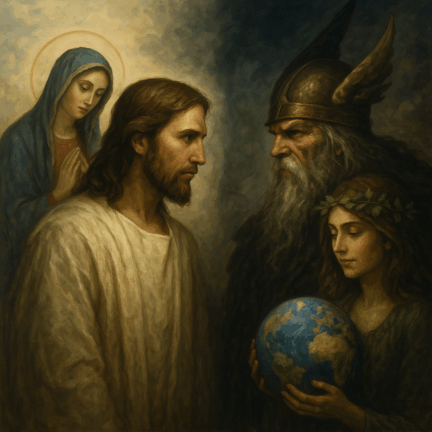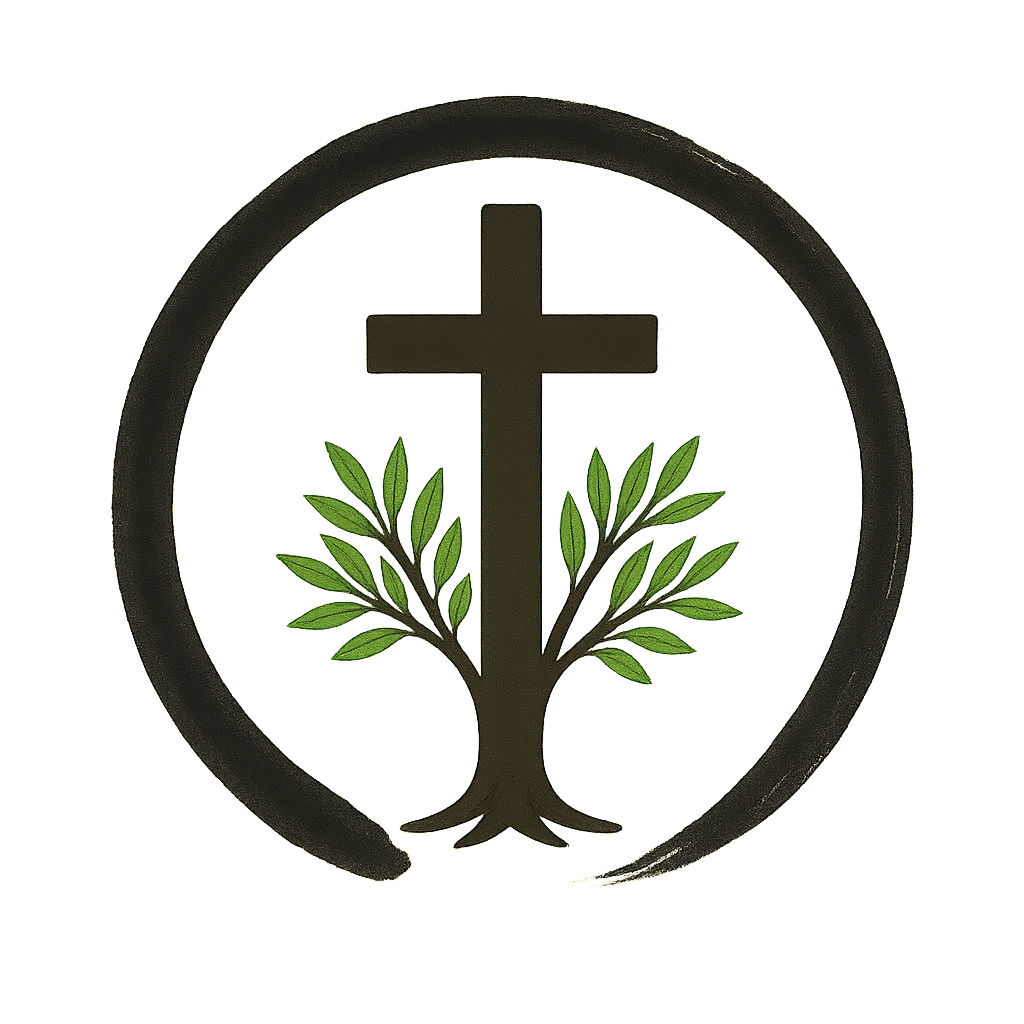The New Paganism – The Return of Wotan, Odin, and Gaia in the Guise of Progress
For sixty years, the West has lived as if it had dismissed God. Churches have become museums, prayers mere remembrances, the cross just one symbol among many. But humanity that loses God does not create nothingness—it summons the old gods back. What was once myth returns—no longer in the temple, but in thought, in activism, in the digital cathedrals of the zeitgeist.
Humanity Without God
Our time stands at an invisible crossroads. It is not merely a cultural or political crisis—it is a spiritual decision: Since humanity emptied the heavens, the old gods are rising again—not from stone and myth, but from the collective unconscious.
When the divine within humanity is extinguished, the repressed powers return to occupy its empty throne. We cannot create gods—we can only choose God. Otherwise, we will be chosen by the gods. (C.G. Jung)
And that is precisely what is happening today.
The False All-Father - Odin
Odin, the All-Father, appears as a figure of light: wise, knowing, searching. But he is not the true father. He is the shadow of the divine, the image of divine power without divine love.
Odin sacrifices his eye for knowledge – Christ sacrifices himself for the world. Odin hangs on the World Tree to gain wisdom – Christ hangs on the cross to redeem the world.
Both images resemble each other outwardly, but between them lies the abyss between self-deification and surrender. Odin, the All-Father, seeks dominion over fate; the father of Jesus bestows freedom in trust.
Odin is the great symbol of the will that crowns itself. God, however, is the origin, who loves and calls. Therefore, Odin is the mirror, not the light. He is the "All-Father," but not the father of all.
The Return of the Furious God – Wotan
The old Wotan – the “Wrathful One” – has awakened once more. Jung saw him in the political frenzies of the 20th century: as the archetypal power of the storm spirit, the restless will that floods thought and drives the soul into a collective trance.
Today, Wotan's influence is quieter, but more profound: He lives in the drive for total control, in ideological fury, in unleashed activism that knows no middle ground. He is the unspirit that mistakes itself for consciousness – that calls out, screams, rebels, fights, but no longer prays.
Wotan is the spirit of unrest, of restless movement, of permanent outrage. He has robbed humanity of itself by drawing it into the maelstrom of ideological battles and moral outrage. The furious god is among us again – as a collective mood, as a trance of the zeitgeist.
Wotan, the wrathful god, roams the world in new guises. He is the spirit of indignation, of moral frenzy, of perpetual, aimless movement. He is active in the storms of ideologies, in the ecstasy of progress, in the frenzy of the digital age.
Wotan calls people to action—but not to truth. He unleashes forces that consider themselves divine and leaves behind souls that have lost themselves.
Whoever follows the wrathful one loses peace. Whoever resists him is mocked by him. But whoever turns to Christ stands still in the storm.
The Seduction of Gaia
At the same time, another power rises: Gaia, the deified Earth. What was once considered God's creation is now itself elevated to the status of a god. The creature is no longer worshipped, but the Creator.
The cult of the Earth manifests itself in ecological moralism, in an almost religious fear of climate catastrophe, in the penance of abstaining from consumption, and in purification through CO₂ neutrality. These movements may begin with justification, but they lose their sense of proportion when they no longer refer to the heavens.
Gaia is the mother who embraces all—but without the father who discerns, she becomes a clutch. Thus, the maternal becomes a power that devours, not nourishes.
While Wotan rages, Gaia rises—the deified Earth. Her cult is gentle, yet binding. She speaks of healing, but knows no redemption. She comforts, but she does not liberate.
Where the paternal is absent, the maternal becomes all-powerful. Thus, modernity worships the Earth, no longer the heavens. It invokes the elements, but not the spirit. It honors life, but not the origin of life.
Gaia is the mother who encompasses all things—yet she remains earth. Christ alone unites earth and heaven.
Between Wotan and Gaia
Between Wotan and Gaia, between frenzy and fusion, modern humanity loses its center. It teeters between the forces of will and fear, between technological hubris and ecological guilt.
One calls for domination, the other for dissolution. Both, however, stand against the one God who neither deifies nor devours humanity, but redeems it.
What is missing
The cross is the axis between heaven and earth. Only in the cross is the storm of Wotan tamed and the embrace of Gaia ordered.
Between Odin and God, between Wotan and Christ, between Gaia and Mary, humankind stands as a wanderer in the mist. Both call to us—one with power, the other with love.
But there is no neutral path. Whoever does not choose one will be claimed by the other. Thus, the hour has come when humankind must choose again:
One leads to unity,
the other to division.
One redeems,
the other unleashes.
The task of the spirit
New Paganism is not progress, but the return of the unconscious. It speaks the language of false morality, but not of truth. It knows movement, but not stillness. It knows the sacred, but not the holy one.
Repentance begins when we learn to kneel again. Not before the earth, not before the idea, not before one's own feelings, but before the One who is the measure of all things.
Only those who choose God will be free from the gods. Only those who place spirit over blood,
and word over mood, will no longer be slaves to the raging God.
Concluding Remarks
The Nigredo Monastery stands in the spirit of this conversion. It does not seek escape into old forms, but the rebirth of the spirit in a fractured world.
For those who rediscover God become capable of loving the earth as well—not as a goddess, but as creation. Not as a mother who binds, but as a sister who waits with us for the light.
Thus ends the circle that Wotan tore open, and begins the path that Christ opens: from storm to stillness, from rage to wisdom, from myth to truth.
The Nigredo Monastery affirms its commitment to the still center, to the cross between heaven and earth, to the God who does not rage, but heals.
Odin may be called the All-Father, but the true Father is the one who gives his Son— not the one who exalts himself. For only in Christ does man find peace, not in the storm of the old gods. And whoever chooses God is no longer driven by the spirit of the age, but sustained by the Spirit.
It is not the earth that saves man, but man, who entrusts himself to God,
saves the earth.

